Journal of
eISSN: 2574-8114


Review Article Volume 5 Issue 6
1Acting Dean, Tsinghua Arts and Design Institute in Milan (ADIM), China
2Professor Dean Fashion & Textile Design Department, Academy of Arts & Design, Tsinghua University, China
Correspondence: Dr. ZANG Yingchun, Professor Dean Fashion & Textile Design Department, Academy of Arts & Design, Tsinghua University, China
Received: July 11, 2019 | Published: November 28, 2019
Citation: Jing S, Yingchun Z. Experimental research on 3D printing technology for fashion applications based on self-forming structures. J Textile Eng Fashion Technol. 2019;5(6):292-298. DOI: 10.15406/jteft.2019.05.00216
Based on the previous case studies of 3D printing technology and 3D printed fashion research at home and abroad, the newly self-forming structure of 3D printing is determined as the main research direction in this paper. With the comparison of a variety of 3D printing clothing application forms and its implementation of technology and materials, the main 3D printing technology, materials and related fabrics used in the self-forming structure are summarized and analyzed. A series of structural design and models, fabric sample experiment and final collection design are developed subsequently for the self-forming structure. Finally, according to the result gained from the experiment, the potential development of self-forming structure and the direction of 3D printing garment in the future are discussed.
Keywords: 3D printing, fashion, self-forming structure
Since Charles Hull first introduced the technology of printing three-dimensional models from digital documents in 1984, the 3D printing technology, which was considered to be the fourth wave of industrial revolution, has gone through 34 years. 3D printing technology, a special generation after 80s, has brought new technological changes in many fields such as industry, aerospace, medical treatment and architecture etc. In contrast, the cooperation between 3D printing and garments is relatively late, but the pace of development is to be reckoned with as it is no longer difficult to research and develop the sculptural forms of garment with rigid filaments. In the terms of wearable fashion, although it is tricky to develop suitable soft materials for long term sensitive skin, there have been already further breakthroughs in hybrid constructions between soft and hard materials, producing greater flexibility and movement.1–3
3D printed clothes
Nowadays, commonly used 3D printing materials which are more rigid include ABS, PLA, nylon, metal and resins. Initially, thanks to the hard filaments, 3D printing took steps in the application of accessories such as shoes, hats and jewelry in the apparel field. Then it discussed the soft products of clothing liked "the second skin", which the technology gave two directions for it: one was the sculptural overall shape or partial forms of clothing. Iris Van Herpen, a Dutch 3D printing fashion designer, was a representative of the direction of sculptural forms. Beginning with Paris Fashion Week in 2011, Iris was very skilled in modeling. From "Capriole" (Figure 1) to "Magnetic Motion" (Figure 2) collection, Iris pioneered the application of digital sculptural variation.
The other was to create wearable textiles with intricate structural designs. From the perspective of printing fabrics, it was divided into three situations: 3D natural fiber printing, imitation of fabric structure 3D printing and combination of fabric 3D printing. 3D natural fiber printing was at its dawning, so the technology and application were less mature than the imitation of fabric printing like Kinematic collection (Figure 3) designed by Nervous System studio, Aminomo (Figure 4), an 3D printed garment which imitated traditional knitted structure by Japanese designer, and Venus (Figure 5) in elastic structural design printed by Israel designer Danit Peleg.
As for the combination of 3D printing with fabric, it was more like embroidery evolving fashion and practicality. In April 2018, Massachusetts-based design studio Nervous System made use of 3D printing technology to explore the possibility of creating self-forming structures by printing on stretched fabric. They transform pieces of fabrics form into specific 3D shapes by printing different patterns of plastic on it while they were stretched. And these kind of printed plastic patterns inhibited the contraction of the surface, guiding the stretched fabric to gain its desired shape when it was released (Figure 6). This self-forming structure also was referred to as “4D printing”, and author determined it as the main research orientation as is a considerable potential for fashion creation.
The key of 3D printing self-forming structure was to print on the top of the extra-flexible fabric. And the FDM technique was preferred because it had more flexibility combined with fabrics, had cleaner operations as compared to SLA, SLS and the other methods. Then there were several materials available for FDM like PLA, TPU and ABS. Additionally, author explored a variety of software design tools, settling on Rhinoceros 5, grasshopper and 3DMAX as auxiliary design software.
Structural design
According to the Nervous System self-forming structure’s sample, the whole stretched fabric was formed along with the skeleton after it released. Actually, the skeletons of 3D shape corresponded to the design patterns of flat and unstructured fabric. Thereby, plane pattern as well as three-dimensional modeling, which directly related to self-structured forming, engaged in divergent design thinking. As illustrated in Figure 7, there are Chinese traditional patterns, lace patterns, geometric figure and paper folding these different ways of thinking. Finally, in order to understand the related rules of self-forming structure printed on fabrics more quickly, the experiment focused on simple geometric patterns as skeleton rather for design preparations than merely complex, decorative one.
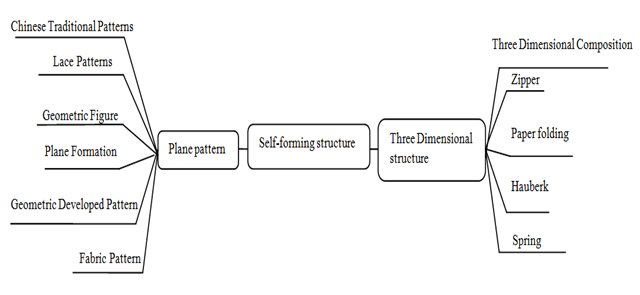
Figure 7 Three-dimensional modeling, which directly related to self-structured forming engaged in divergent design thinking.
Fabric sample experiment
The experiment consisted of eight steps supporting this 3D printing design research project. The first part was in the feasibility phase, about whether the plastic filaments and bottom fabric could stick together or not, and later one tested for which kind of fabric to use in the whole experiment. After several rounds of printing feasibility operation and the contrast experiment of textile, it was concluded that fine knitted fabrics with larger elasticity and thinner thickness could facilitate freely forming (Figure 8). And fabric which had meshes exposed when stretching could be another experimental choice because of its great adhesion strength with printing filaments.
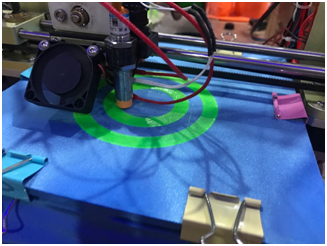
Figure 8 Fine knitted fabrics with larger elasticity and thinner thickness could facilitate freely forming.
The third part was to use the same pattern but varying degrees of softness of plastic materials to print on the fabrics that had different mesh size (Figure 9). As we can see from that figure, the sample was printed with PLA. Due to this rigid material, the pattern did not transform with stretched fabric. That is, the larger elastic the small-meshed fabric was, the greater deformation this shape would be (Figure 10). On the other hand, spandex fabrics that were large mesh, wide pattern lines were able to create an impressive shape; otherwise it would be loosely separated from the bottom fabrics.
The fourth part was to sort out the aforementioned patterns or structure design and continue to conduct printing experiments. These were examples of pattern where the self-forming structure printing presented great improvement and good results: banded wave, strip wave, single and double circular pattern and argyle. In the process of graphic experiment, argyle was the most difficult pattern to form; sometimes it even couldn’t stick on the fabric, or just resulted unsatisfactory deformation. Several sample experiments later, it was found that the key point of self-forming was to establish closed pattern to print (Figure 11), both for the ring and argyle pattern. Eventually, the banded wavy patterns were experimented in various self-forming structure like jewelry (Figure 12), while the other forms printed from strip wavy patterns were the same as real sewing pleats (Figure 13).
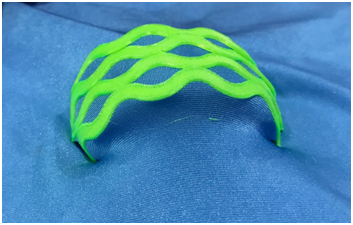
Figure 12 The banded wavy patterns were experimented in various self-forming structure like jewelry.
The fifth printing experiments’ aim was about garment structure line. Apparel paper pattern and structural line brought quite a lot inspiration to author. It was to explore the possibility of transforming the sample into desired 3D clothing silhouette directly by printing the way of apparel line. With the basic paper pattern preparation, it had divided into two groups: the whole piece printing and the frame line printing for the effect contrast of final modelling (Figure 14). At the same time, author introduced a new method following the frame idea, cutting the structural lines of basic garment jacket and wearing this alternating one piece of paper (Figure 15). Subsequently, the same method will be used to conduct 3D printing experiments on the fabric.
The sixth part was the 3D clothing details printing. Inspired by the article "How to 3D Print on the Fabric" on the “Instructables” website, author had proposed printing suppositions regarding ways of imitating the connected modes of clothing such as zippers and buttons or something new. Ultimately, the button imitated experiment was carried out. As shown in Figure 16, the bottom of 0.5 cm of the button was printed first, then stopped printing operation, put fabric onto it and printed the rest top of 0.5 cm of button. By doing so, the two-part button operation printed with fabric enabled 3D printed details to bond firmly and not easy to fall off (Figure 17).
The seventh step was based on the fifth but for the bag structural line printing. The self-forming structure was operated on a single fabric in order to form as an integer. There were two methods for the self-forming bag, which was to print the required structure of the bag on one or more than two pieces of fabric and combined it together. The first scheme had the whole characteristics of self-forming structure, so two simple wrapping frames were printed and intersected each other for an unusual hand-make bag. As we can saw from Figure 18, it showed 3D the 3D printing process and a cross-connection bag.
And the last part experimented open source software of interlocking structure, using that for exploring the other possibility of 3D printed fabric. As one kind of the 3D printing fabrics, chain structure could cooperate with self-forming structure fabrics to fabricate a new fashion silhouette, or only used as accessories such as belts, bands, etc. If customers wanted to get an exquisite one, this independent single product might need sanding or polishing to improve the aesthetic quality of printed accessories (Figure 19).
Until now, all the eight parts’ experiment has been carried out and accumulated for further development for quite a long-time. And there were unexpected findings through simple structural lines printing with both flexible filaments and stretched fabrics. Only under the combination of that, can each simple straight line form a supporting structure, and the unprinted part shrank uniformly, resulting in a deformed spring shape unpredictably (Figure 20).
An assortment of fabric samples at eight different stages has been summarized. Several desired pieces were selected for further stereoscopic modeling experiments, which are the shape of saddle, rhombus, spring and button.
The shapes formed from double-ring pattern changed with a slight adjustment of the width of the ring or the thickness of the printing filaments was saddle, bowknot and “Yunjian”. Saddle shape could be placed on the buttocks to mold women’s three-dimensional waist curve which was a slight trace of the “Bustle dress”. In addition, the size of shape designed on the chest, shoulder and waist was adjustable, according to various self-forming structure for standing out the delicate curve, the softness and tenderness of women (Figure 21). “Spring” was also a variable and diverse shape. Different sizes of it could be modelling on the shoulder, sleeve, waist and skirt or trousers hem in order to add a little vitality to the whole dress (Figure 22). Besides, the applications of button structure rich and varied way shape in the apparel design of different parts as well, according to its feature, some of which were made conception from shoulder, breast (Figure 23), waist, back to hip, from collar to side seams, or just from the back (Figure 24). In this way the ensembles have been done out the effect of dyadic stack-up clothing, creating a strong texture contrast to show a youthful, appealing, creative charm.
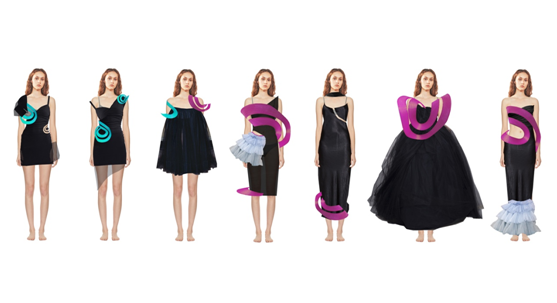
Figure 21 The size of shape designed on the chest, shoulder and waist was adjustable, according to various self-forming structure for standing out the delicate curve.
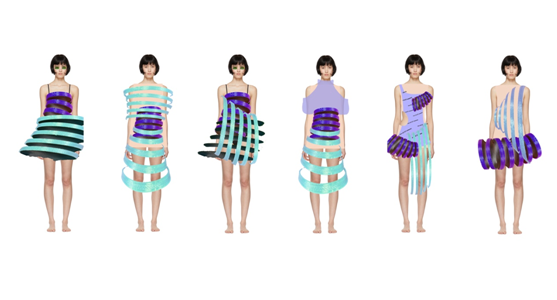
Figure 22 Different sizes of it could be modelling on the shoulder, sleeve, waist and skirt or trousers hem in order to add a little vitality to the whole dress.
The whole research has been experimenting continuous changing of printing patterns for a long time. However, instead of fabricating what shape you want, it was difficult to control the final shape from the printed geometric pattern, let alone complex patterns printing, which its distribution of points, lines and surfaces are too irregular to be manipulated in one piece of work, especially to change into a variety of three-dimensional structures. Thus, the research focuses more on surface decoration, the other side of research, rather than three-dimensional structure.
All of the ideal self-forming structures mentioned above are mainly innovated around the "frame", and the structural design is ultimately equivalent of the “framework” design. Combining with fabrics is a prime example of how to turn 3D-printed experimental works into real life, because it not only has highly affinitive with the skin that other rigid chain-structures don’t include, but also could add aesthetic quality as with embroidery that has both decorative patterns and rich sculpts (Figure 25). Additionally, after printed the structural line on the fabric, three-dimensional apparel modeling can be produced without joining different pieces of a garment, which also offers the fashion industry an innovative alternative to the seamless eco-friendly creation. Up to now, 3D printing has limited materials for daily outfits, making it difficult to ensure patterns’ adhesion, durability and washability. However, by taking advantage of rapid information development in this era, it is possible to emerge newly suitable technology and materials available for designers meeting their expectations.
Thanks to the intricately interlocking and fabric-like structure exhibiting great potential applications of hard printing materials, the three-dimensional printed rarefied, avant-garde, gorgeous garments that used to appear only in the haute couture, can also be used as a casual dressing and possibly flow into ordinary people's homes. All in all, due to 3D fiber printing still in its infancy, the emerging self-forming structure printed on new fabrics will garner attention earlier for its significantly functional and aesthetic value in the near future.
None.
None.
The authors declare that they have no competing interests.

©2019 Jing, et al. This is an open access article distributed under the terms of the, which permits unrestricted use, distribution, and build upon your work non-commercially.